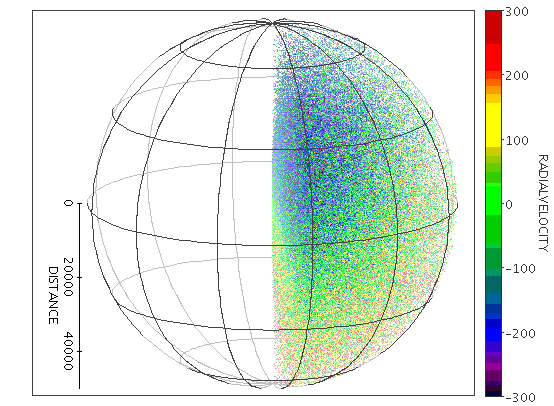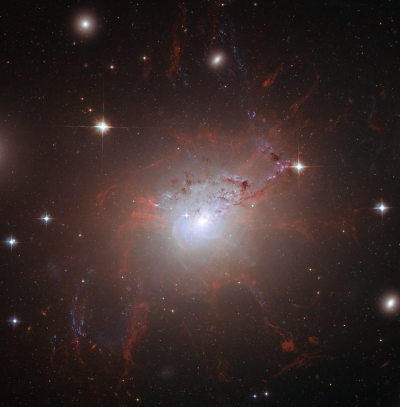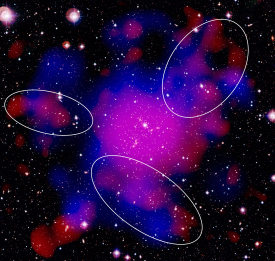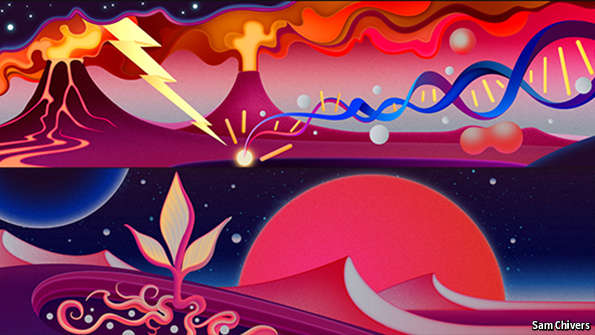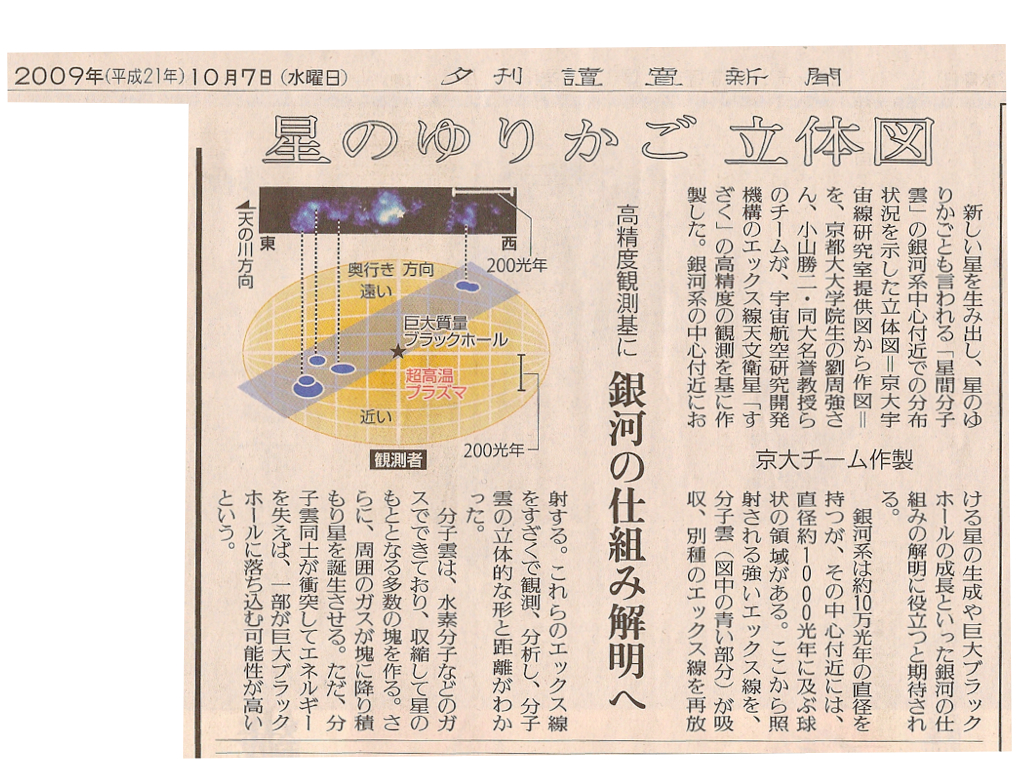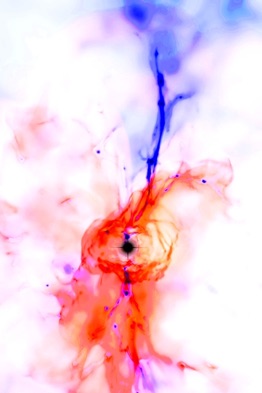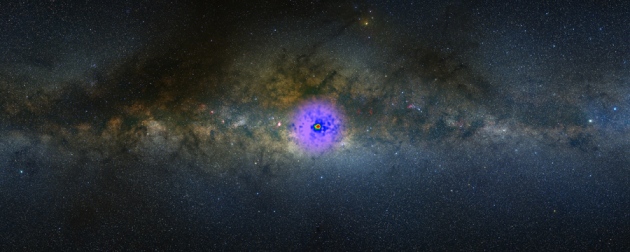http://www.cosmos.esa.int/web/gaia
2015年12月10日木曜日
2015年12月9日水曜日
Plank Image: Magnetic field lines traced by dust emission at 353 GHz [Feb 2015]
http://xxx.lanl.gov/abs/1502.01582
http://www.cosmos.esa.int/web/planck/picture-gallery
http://apod.nasa.gov/apod/ap130325.html
Magnetic field lines traced by dust emission at 353 GHz [Feb 2015]
http://www.cosmos.esa.int/web/planck/picture-gallery
http://apod.nasa.gov/apod/ap130325.html
Magnetic field lines traced by dust emission at 353 GHz [Feb 2015]
Cosmology with the Planck satellite
ISAS 「宇宙科学談話会(第32回)」
講師: Francois R. Bouchet (Institut D’Astrophysique de Paris)
http://www2.iap.fr/users/bouchet/bouchet.html
題目: Cosmology with the Planck satellite
Space Science Colloquium
Date: 16:30-17:30, 9th of December (Wed), 2015
Place: Conference room (Main building 2F)
Speaker: Francois R. Bouchet (Institut D’Astrophysique de Paris)
Title: Cosmology with the Planck satellite
Abstract: Sketched out in 1992, selected by ESA in 1996, and launched in
2009, the Planck satellite was shut off in 2013, after a measuring
mission that exceeded all expectations. The Planck collaboration
delivered a first set of cosmological data and results in March 21st
2013, and the full set in February 2015. Part of the data delivery is a
"definitive" map of the anisotropies of the Cosmic Microwave Background
(CMB), its angular power spectrum together with their full statistical
characterisation. The 2015 delivery also includes pioneering
polarisation data. The temperature anisotropy map displays minuscule
variations as a function of the observing direction, of rms ~100microK,
of the fossil radiation around its mean temperature of 2.725K. Other
maps reveal the CMB polarisation. The anisotropies are the imprint of
the primordial fluctuations which initiated the growth of the large
scale structures of the Universe, as transformed by their evolution, in
particular during the first 370 000 years. The polarisation is another
imprint whose theoretical implications can then be confronted with those
derived from the temperature field. I will described the results we
obtained so far from temperature and polarisation data, both in terms
of content of the universe and of characteristics of the primordial
fluctuations.
講師: Francois R. Bouchet (Institut D’Astrophysique de Paris)
http://www2.iap.fr/users/bouchet/bouchet.html
題目: Cosmology with the Planck satellite
Space Science Colloquium
Date: 16:30-17:30, 9th of December (Wed), 2015
Place: Conference room (Main building 2F)
Speaker: Francois R. Bouchet (Institut D’Astrophysique de Paris)
Title: Cosmology with the Planck satellite
Abstract: Sketched out in 1992, selected by ESA in 1996, and launched in
2009, the Planck satellite was shut off in 2013, after a measuring
mission that exceeded all expectations. The Planck collaboration
delivered a first set of cosmological data and results in March 21st
2013, and the full set in February 2015. Part of the data delivery is a
"definitive" map of the anisotropies of the Cosmic Microwave Background
(CMB), its angular power spectrum together with their full statistical
characterisation. The 2015 delivery also includes pioneering
polarisation data. The temperature anisotropy map displays minuscule
variations as a function of the observing direction, of rms ~100microK,
of the fossil radiation around its mean temperature of 2.725K. Other
maps reveal the CMB polarisation. The anisotropies are the imprint of
the primordial fluctuations which initiated the growth of the large
scale structures of the Universe, as transformed by their evolution, in
particular during the first 370 000 years. The polarisation is another
imprint whose theoretical implications can then be confronted with those
derived from the temperature field. I will described the results we
obtained so far from temperature and polarisation data, both in terms
of content of the universe and of characteristics of the primordial
fluctuations.
ラベル:
cosmology,
isas-rigaku-seminar,
Planck,
plank,
seminar
2015年12月8日火曜日
XMM-Newton observations of the cluster of galaxies Abell 496
http://adsabs.harvard.edu/abs/2001A%26A...379..107T
The results from XMM-Newton observations of the relaxed cluster of galaxies Abell 496 are presented. The spatially-resolved X-ray spectra taken by the European Photon Imaging Cameras show a temperature drop and a Fe abundance increase in the intra-cluster medium (ICM) towards the cD galaxy at the cluster center. The abundances of Si and S also show a central enhancement. High resolution soft X-ray spectra obtained with the Reflection Grating Spectrometers provides a strong constraint on the temperature structure in the central cool plasma. Furthermore, the O abundance at the cluster core is accurately measured based on the O Viii Lyalpha line detected with the RGS. Contrary to the Si, S, and Fe abundances, the O abundance is radially constant over the cluster.
The results from XMM-Newton observations of the relaxed cluster of galaxies Abell 496 are presented. The spatially-resolved X-ray spectra taken by the European Photon Imaging Cameras show a temperature drop and a Fe abundance increase in the intra-cluster medium (ICM) towards the cD galaxy at the cluster center. The abundances of Si and S also show a central enhancement. High resolution soft X-ray spectra obtained with the Reflection Grating Spectrometers provides a strong constraint on the temperature structure in the central cool plasma. Furthermore, the O abundance at the cluster core is accurately measured based on the O Viii Lyalpha line detected with the RGS. Contrary to the Si, S, and Fe abundances, the O abundance is radially constant over the cluster.
ラベル:
Abell496,
tamura_papers,
XMM-RGS
because it is beautiful
Henri Poincaré
in
Science and Method
copy fromhttp://www.goodreads.com/quotes/279030-the-scientist-does-not-study-nature-because-it-is-useful
“The scientist does not study nature because it is useful to do so.He studies it because he takes pleasure in it,
and he takes pleasure in it because it is beautiful.
If nature were not beautiful it would not be worth knowing,
and life would not be worth living.
I am not speaking, of course, of the beauty which strikes the senses, of the beauty of qualities and appearances.
I am far from despising this, but it has nothing to do with science.
What I mean is that more intimate beauty which comes from the harmonious order of its parts, and which a pure intelligence can grasp.”
Teaching and learning astronomy in the 21st century
http://scitation.aip.org/content/aip/magazine/physicstoday/article/62/10/10.1063/1.3248478
2009, physics today
* パリティ 2010 No.8
21 世紀の天文学の教え方・学び方 E. E. プラザー,A. L. ルドルフ,G. ブリッセンデン 福江純訳
2009, physics today
* パリティ 2010 No.8
21 世紀の天文学の教え方・学び方 E. E. プラザー,A. L. ルドルフ,G. ブリッセンデン 福江純訳
ラベル:
education,
parity,
physicsToday
Astronomy for the Developing World 2010-2020
http://www.iau.org/education/strategic_plan/
Astronomy is a unique and cost-effective tool for furthering sustainable global development, because of its technological scientific and cultural dimensions. This plan shows how astronomy can contribute globally to education at the primary, secondary and tertiary levels and can enable less developed, poorer countries to participate in cutting-edge scientific research.
2015年12月7日月曜日
2015年11月26日木曜日
2015年11月25日水曜日
2015年11月4日水曜日
Chromospheric Lyman-Alpha Spectro-Polarimeter (CLASP)
「宇宙科学談話会(第28回)」 日時: 2015年11月4日(水) 16:30-17:30 場所: 宇宙研 A棟2階 大会議場 講師: 鹿野 良平 (国立天文台) 題目: Chromospheric Lyman-Alpha Spectro-Polarimeter (CLASP) 概要: 国際共同プロジェクトChromospheric Lyman-Alpha Spectro-Polarimeter (CLASP)は、仏国・スペイン・ノルウェーの協力の下、日米で進めてきた観測 ロケット実験です。その目的は、ライマンα輝線(121.567nm)の直線偏光を 0.1%という高精度で測定し、ハンレ効果を用いて彩層・遷移層の磁場情報を 得ることです。 CLASP観測装置は、カセグレン望遠鏡・偏光分光解析装置・2次元撮像光学系の 3つの構成要素からなり、CCDカメラ(米国担当)と回折格子(仏国担当)を除く 大部分は日本が担当し開発されました。今年の9月3日にNASA観測ロケットに よって米国ホワイトサンズ発射場から無事に打上げられ、太陽大気の彩層・ 遷移層が放つライマンα輝線の偏光観測に世界で初めて成功しました。また、 太陽観測衛星「ひので」やIRIS衛星、および地上太陽観測所との共同観測に より、太陽表面から上層コロナまで多面的なデータを取得しています。 今回得られた素晴らしい観測データにより、現在、当初目的の偏光解析以外 にも様々な観点から解析研究が進められています。
ラベル:
isas-rigaku-seminar,
naoj,
solar-physics
2015年10月23日金曜日
2015年10月9日金曜日
XMM AO15 proposal: X-ray large scale survey of the nearby galaxy cluster Abell2199
2015-10: Submitted.
We use XMM to map the cluster Abell 2199 intermediate region (<3 p="" virial="">radius) and search X-ray faint substructures in a wide spacial range from
a galaxy to a cluster and larger sizes. We observed this area with SUZAKU
and found a number of structures and a hint of asymmetric large scale emission.
These substructures along with unresolved background sources should be
resolved spatially and covered fully with XMM imaging. Errors of the EPIC
background will be reduced by our SUZAKU deep spectra. These X-ray maps will
be compared with our wide area weak-lensing data observed with SUBARU Hyper
suprime-Cam. The XMM observations provide uniquely a direct comparison among
structures of galaxies, ICM, and dark matter.
2015-12
We use XMM to map the cluster Abell 2199 intermediate region (<3 p="" virial="">radius) and search X-ray faint substructures in a wide spacial range from
a galaxy to a cluster and larger sizes. We observed this area with SUZAKU
and found a number of structures and a hint of asymmetric large scale emission.
These substructures along with unresolved background sources should be
resolved spatially and covered fully with XMM imaging. Errors of the EPIC
background will be reduced by our SUZAKU deep spectra. These X-ray maps will
be compared with our wide area weak-lensing data observed with SUBARU Hyper
suprime-Cam. The XMM observations provide uniquely a direct comparison among
structures of galaxies, ICM, and dark matter.
Accepted
Accepted observations:
----------------------
Target R.A. Dec. Duration N Pri Fix Com Dup
hh mm ss dd mm ss (sec)
[1] [2] [3] [4] [5] [6]
----------------------------------------------------------------------------------
A2199-off1 16 28 38.17 +39 53 01.0 28000 1 C
A2199-off2 16 28 38.17 +39 13 00.8 38000 1 C
A2199-off3 16 30 31.72 +39 32 59.3 38000 1 C
A2199-off4 16 26 44.14 +39 33 00.0 28000 1 C
A2199-off5 16 30 31.72 +39 53 01.0 28000 1 C
A2199-off6 16 26 44.14 +39 53 01.0 28000 1 C
A2199-off7 16 30 31.72 +39 13 00.8 28000 1 C
A2199-off8 16 26 44.14 +39 13 00.8 28000 1 C
----------------------------------------------------------------------------------
----------------------
Target R.A. Dec. Duration N Pri Fix Com Dup
hh mm ss dd mm ss (sec)
[1] [2] [3] [4] [5] [6]
----------------------------------------------------------------------------------
A2199-off1 16 28 38.17 +39 53 01.0 28000 1 C
A2199-off2 16 28 38.17 +39 13 00.8 38000 1 C
A2199-off3 16 30 31.72 +39 32 59.3 38000 1 C
A2199-off4 16 26 44.14 +39 33 00.0 28000 1 C
A2199-off5 16 30 31.72 +39 53 01.0 28000 1 C
A2199-off6 16 26 44.14 +39 53 01.0 28000 1 C
A2199-off7 16 30 31.72 +39 13 00.8 28000 1 C
A2199-off8 16 26 44.14 +39 13 00.8 28000 1 C
----------------------------------------------------------------------------------
2015年10月7日水曜日
2015年10月4日日曜日
2015年9月28日月曜日
Talk at University of Helsinki, 2015-10-02
https://wiki.helsinki.fi/display/astjourn/Astrophysics+seminar
X-ray spectroscopy of galaxy clusters with Suzaku and future ASTRO-H
X-ray spectroscopy of galaxy clusters with Suzaku and future ASTRO-H
ラベル:
ASTRO-H,
helsinki,
suzaku,
tamura_talk
2015年9月18日金曜日
Advanced LIGO starts the 1st observation run
Space Science Seminar
Speaker: Dr. Kiwamu Izumi(Postdoctoral fellow in physics, California Institute of Technology,LIGO Hanford Observatory)
Title: Advanced LIGO starts the 1st observation run . Abstract: Gravitational waves are ripple of space-time which nobody ever directly detected.Advanced LIGO is an ambitious U.S. project that improves the sensitivity of LIGO (Laser Interferometer Gravitational-wave Observatory) and will be capable of detecting a gravitational wave event from a neutron star binary at a distance of 200 Mpc. The detection rate of advanced LIGO, if running fully at the design sensitivity, may reach as high as a few events per year and therefore it will consequently allow us for opening a new astronomy branch, gravitational-wave astronomy. After finishing all the installation in this Spring, we have spent our time on tuning the interferometers in order to prepare for the planned first observation run. The observation run will start at 14th of this September for three months with a lowered laser power. In this talk, I will give an overview of advanced LIGO together with some highlights from the recent turning experiments, and finally talk about possible detection scenarios.
「宇宙科学セミナー(第9回)」 日時: 2015年9月18日(金)16:30-17:30 ※通常と曜日が異なる(金曜開催)のでご注意願います。 場所: 宇宙研 A棟2階 大会議場 講師: 和泉 究氏(カリフォルニア工科大学 LIGO ハンフォード観測所研究員) 題目: Advanced LIGO 観測始動 概要 重力波は未だかつて誰も直接観測をしていない時空の揺らぎの波である。 Advanced LIGO は米国主導のLIGO (Laser Interferometer Gravitational wave Observatory)のアップグレード計画であり、200 Mpc 程度離れた中性子星連星か らの重力波イベントまで検出できる感度へ到達しようという野心的なプロジェク トである。Advanced LIGO をデザイン感度で走らせると年間数イベント以上の重 力波イベントが観測されると期待されており、これにより天文学の新しい分野・ 重力波天文学が幕開けする と期待されている。今年の春にインストールが全行 程終了し、advanced LIGOはこれまで初観測に向けた干渉計の調整を行ってき た。初観測は低レーザーパワー運転で9月14日より3ヶ月間行う予定である。 本トークではadvanced LIGOの概要を俯瞰しつつ、調整期間に実施された実験か らいくつかのハイライトを紹介し、最後に考えられる検出シナリオについて述べ る予定である。
ラベル:
caltech,
gravitationalWave,
isas,
LIGO
2015年9月8日火曜日
2015年9月1日火曜日
tips in spec: write chi2 in plot
https://heasarc.gsfc.nasa.gov/xanadu/xspec/manual/XStclout.html
tclout stat
scan $xspec_tclout "%f" chistat
echo $chistat
tclout dof 1
scan $xspec_tclout "%d" dofd
setp com wi 2
setp com la f "chi2=$chistat dof=$dofd"
tclout stat
scan $xspec_tclout "%f" chistat
echo $chistat
tclout dof 1
scan $xspec_tclout "%d" dofd
setp com wi 2
setp com la f "chi2=$chistat dof=$dofd"
ラベル:
xspec
2015年8月31日月曜日
Galactic Rotation Curves with Dark Matter Self-Interactions
Dr. Ayuki Kamada (UC Riverside) 2015-08-31
ISAS seminar Abstract: It has been shown that the LambdaCDM model can successfully explain large-scale structure of the universe. But it is not clear that it can accommodate observations on (sub-)galactic scales. In fact, the LambdaCDM model predicts dark matter halos, which are systematically denser than inferred from astrophysical observations. One interesting alternative assumes that dark matter particles are strongly interacting with each other. Dark matter self-interactions will lead to heat transfer from the hotter outer region to the cold inner region, reducing the central dark matter density. In this talk, I will show that the observed rotation curves of spiral galaxies are consistent with predicted in the SIDM model. I will also emphasize the importance of the baryonic disk in determining the SIDM halo profile.
ラベル:
dark-matter,
isas-astro-seminar,
Kamada
2015年8月27日木曜日
looking into X-ray spectra
I have been looking into these kinds of X-ray spectra from the hot universe.
For some long time…
Can I discover something new from these data further more ?
Or need brand new instruments ?
ラベル:
ASTRO-H,
perseus,
x-ray-astronomy
2015年8月18日火曜日
The Exploration of Pluto and the Kuiper Belt with the New Horizons Mission
Space Science Seminar Speaker: Dr. Harold (Hal) Weaver (The Johns Hopkins University Applied Physics Laboratory) Title: The Exploration of Pluto and the Kuiper Belt with the New Horizons Mission Abstract: The New Horizons (NH) mission was selected by NASA in November 2001 to conduct the first in situ reconnaissance of Pluto and the Kuiper belt. The NH spacecraft was launched on 2006 January 19, received a gravity assist from Jupiter during closest approach on 2007 February 28, and flew 12,500 km above Pluto's surface on 2015 July 14. NH carries a sophisticated suite of seven scientific instruments, altogether weighing less than 30 kg and drawing less than 30 W of power, that includes panchromatic and color imagers, ultraviolet and infrared spectral imagers, a radio science package, plasma and charged particle sensors, and a dust counting experiment. These instruments enabled the first detailed exploration of a new class of solar system objects, the dwarf planets, which have exotic volatiles on their surfaces, escaping atmospheres, and satellite systems. NH also provided the first dust density measurements beyond 18~AU and cratering records that document both the ancient and present-day collisional environment in the outer solar system down to sizes of tens of meters. NH obtained unprecedented data on Pluto’s small satellites (Styx, Nix, Kerberos, and Hydra), adding significantly to the scientific bounty returned from the NH mission. The NH spacecraft will be targeted toward the flyby of a small (~30 km) KBO in late-2015, enabling the study of an object in a completely different dynamical class (cold classical) than Pluto, if NASA approves an Extended Mission phase.
http://pluto.jhuapl.edu
ラベル:
nasa,
newHorizon,
observatory,
Plute
2015年8月7日金曜日
2015年8月6日木曜日
Luminous Supermassive Black Holes in the Brightest Cluster Galaxies
2015-08-06 ISAS astro seminar
Shutaro Ueda (ISAS/JAXA)
Title: Abstract: Supermassive black holes (SMBHs) in the central galaxies of clusters of galaxies (i.e., in the brightest cluster galaxies; BCGs) are the most massive BH in the Universe. Their masses are estimated to be up to 1011 M. The SMBHs in nearby BCGs have a slight gas accretion rate, which is typically less than 1 % of the Eddington limit. This indicates that their mass growth may be performed at the early stage of evolution of their hosted cluster. However its mechanism is still under debate. We therefore search for quasar hosted BCGs (i.e., with high accretion rate) systematically by referring both the Planck SZ cluster catalogue and the Swift hard X-ray catalogue. We find two sources out of 1203 clusters, which are the Phoenix cluster and H1821+643 cluster. We also investigate their surrounding environment by using X-ray observations with Chandra and Suzaku. We find the neutral iron K-shell line (Fe I) from both quasars and heavily absorption component from the quasar of the Phoenix cluster. We discuss the environments of both quasars and the origin of neutral medium surrounding quasars.
ラベル:
isas-astro-seminar,
S.Ueda
2015年8月2日日曜日
ALPINE COSMOLOGY WORKSHOP 2015
https://wiki.helsinki.fi/display/alpine/cosmology
2015-07-20 -> 24
My talk:
X-ray Observations of MHD in cluster centers
2015-07-20 -> 24
My talk:
X-ray Observations of MHD in cluster centers
ラベル:
Austria,
Finoguenov,
meeting,
tamura_talk
2015年7月29日水曜日
X-ray observations of MHD in cluster centers: Past legacy and ASTRO-H challenges
Talk at
Max's 4 questions workshop.
2015-07-31,
Tokyo University, Tokyo, Japan
http://www-utheal.phys.s.u-tokyo.ac.jp/makishima-workshop-2015/index_en.html
Max's 4 questions workshop.
2015-07-31,
Tokyo University, Tokyo, Japan
http://www-utheal.phys.s.u-tokyo.ac.jp/makishima-workshop-2015/index_en.html
2015年7月8日水曜日
2015年7月2日木曜日
ASTRO-H Thermal Vacuum Test @ Tsukuba
Join final integration and test of the ASTRO-H
at
Tsukuba Space Center.
http://www.jaxa.jp/about/centers/tksc/index_j.html
- 2015-06-26,27,28
- 2015-07-03,04
at
Tsukuba Space Center.
http://www.jaxa.jp/about/centers/tksc/index_j.html
- 2015-06-26,27,28
- 2015-07-03,04
2015年7月1日水曜日
Contact
2015-07-01 Updated
Takayuki TAMURA
JAXA/ISAS
phone: +81-50-336-27354
3-1-1 Yoshinodai Chuo-ku Sagamihara,
Japan, 229-8510
tamura.takayuki --AT-- jaxa.jp
takayuki.tamura --AT-- gmail.com
田村隆幸
宇宙物理学研究系 宇宙科学研究所 (ISAS)
宇宙航空研究開発機構
〒252-5210 神奈川県相模原市中央区由野台 3-1-1
電話 050-336-27354
FAX 042-759-8768
skype: taka.tamura
ISAS
JAXA
Takayuki TAMURA
JAXA/ISAS
phone: +81-50-336-27354
3-1-1 Yoshinodai Chuo-ku Sagamihara,
Japan, 229-8510
tamura.takayuki --AT-- jaxa.jp
takayuki.tamura --AT-- gmail.com
田村隆幸
宇宙物理学研究系 宇宙科学研究所 (ISAS)
宇宙航空研究開発機構
〒252-5210 神奈川県相模原市中央区由野台 3-1-1
電話 050-336-27354
FAX 042-759-8768
skype: taka.tamura
ISAS
JAXA
ラベル:
address,
takayuki-tamura
履歴
研究歴:
1998年:東京大学大学院 博士取得 (「あすか」衛星による銀河団の観測)
1998年-2000年:ISAS ポスドク研究員 (ASTRO-E衛星の試験)
2000年-2003年: オランダSRON ポスドク研究員 (XMM-Newtonによる観測)
2003年- : 宇宙科学研究所 助教、
2015-07-01: 研究系の移動。
現在 助教
宇宙航空研究開発機構 宇宙科学研究所
宇宙物理学研究系
![]()
1998年:東京大学大学院 博士取得 (「あすか」衛星による銀河団の観測)
1998年-2000年:ISAS ポスドク研究員 (ASTRO-E衛星の試験)
2000年-2003年: オランダSRON ポスドク研究員 (XMM-Newtonによる観測)
2003年- : 宇宙科学研究所 助教、
2015-07-01: 研究系の移動。
現在 助教
宇宙航空研究開発機構 宇宙科学研究所
宇宙物理学研究系
ラベル:
position,
takayuki-tamura
2015年6月5日金曜日
Feynman Physics
日本語版
- III 電磁波と物性
流体力学
http://www.feynmanlectures.info/
- III 電磁波と物性
流体力学
http://www.feynmanlectures.info/
(2015-06-05)
1. 踊るアトム
これから述べる講義は,2年過程の物理学であるが,学生諸君が将来物理学者になるものとして,話を進める事にする。
2015年5月30日土曜日
2015年5月29日金曜日
銀河中心,京都大学の成果
http://www-cr.scphys.kyoto-u.ac.jp/research/xray/recent_results.html
papers
e.g.
S. G. Ryu, Masayoshi Nobukawa, Shinya Nakashima, Takeshi Go Tsuru, K. Koyama and H. Uchiyama.
PASJ 65 (2013) http://pasj.oxfordjournals.org/content/65/2/33
ラベル:
Galactic-center,
koyama,
kyotoU,
suzaku
嶺重 慎, Shin Mineshige
ラベル:
black-hole,
education,
kyotoU,
people,
UniversalDesign
2015年5月28日木曜日
A Multiwavelength View of the HST Frontier Fields Clusters
2015-05-28 @ ISAS
Speaker : Dr. Georgiana Ogrean ( CfA, Harvard)
http://hea-www.cfa.harvard.edu/~gogrean/
Title:
A Multiwavelength View of the HST Frontier Fields Clusters
Abstract:
Structure growth in the universe is one of the fundamental astrophysical problems. Merging galaxy clusters are the perfect laboratories to study the effects of structure growth on the thermal and the non-thermal particle populations in the ICM. I will present results from recent deep Chandra observations of the merging HST Frontier Clusters MACS J0416.1-2403 and MACS J0717.5+3745. I will talk about multiwavelength evidence for shocks and turbulence in the ICM, and discuss the constraints set on the merger geometries by optical, X-ray, and radio data.
Speaker : Dr. Georgiana Ogrean ( CfA, Harvard)
http://hea-www.cfa.harvard.edu/~gogrean/
Title:
A Multiwavelength View of the HST Frontier Fields Clusters
Abstract:
Structure growth in the universe is one of the fundamental astrophysical problems. Merging galaxy clusters are the perfect laboratories to study the effects of structure growth on the thermal and the non-thermal particle populations in the ICM. I will present results from recent deep Chandra observations of the merging HST Frontier Clusters MACS J0416.1-2403 and MACS J0717.5+3745. I will talk about multiwavelength evidence for shocks and turbulence in the ICM, and discuss the constraints set on the merger geometries by optical, X-ray, and radio data.
ラベル:
cluster,
isas-astro-seminar
2015年5月25日月曜日
2015年5月22日金曜日
2015年5月20日水曜日
Hot news from hot Venus
2015-05-20 ISAS seminar
Speaker: Dr.Javier Peralta (ITYF, ISAS) Title: Hot news from hot Venus Abstract: After decades of space exploration, the misterious Earth's twin planet jealously keeps most of its secrets hidden below its persistent cloud coverage. Despite both planets were certainly born as nearly identical bodies, Venus' cruel fate has condemned it to hell conditions for life in its obscured surface, at the time that its atmosphere is a living paradox where the planet rotates as slow as fast its atmosphere is. And the history of its exploration clearly teaches a simple rule: Venus is never as expected.
ラベル:
isas-rigaku-seminar,
turbulence,
venus
2015年5月18日月曜日
2015年5月13日水曜日
春の長野で、「巨大ブラックホール」と「天文教育(普及)」
http://www.phyas.aichi-edu.ac.jp/~takahasi/GCF2015/
http://www.phyas.aichi-edu.ac.jp/~takahasi/GCF2014/
http://www.phyas.aichi-edu.ac.jp/~takahasi/GCF2014/
初日(13:30 - 18:00) イントロ(45分) ・大西浩次(長野高専) :研究会の趣旨(10+5) ・嶺重 慎(京都大) :前回の研究系のまとめ(10+5) ・篠原秀雄(草加東高) :前回の教育系のまとめ(10+5) 第1部:ブラックホール研究最前線(210分+15分休憩) ・田村隆幸(JAXA/ISAS):衛星観測データを用いた宇宙科学(30+10) ・秦和弘・秋山和徳(NAOJ):VLBIによるブラックホール撮像最前線(仮)(30+10) 〔休憩15分〕 ・亀谷 收(NAOJ水沢) :①水沢でのSgrA*モニター観測(10) ②ブラックホールと天の川銀河のアウトリーチ活動(10+5) ・三好 真(国立天文台):銀河NGC4258におけるブラックホール近傍のケプラー運動(15+5) ・高橋真聡(愛教大) :ブラックホール探査に向けての理論的取り組み(仮)(20+5) ・高橋労太(苫小牧高専):ブラックホールの時空での光の振る舞い(20+5) ・嶺重 慎(京都大) :最新ブラックホールシミュレーション事情(20+5) ・斉藤秀樹(長野市博物館):博物館での天文教育(ショートコメント5+5) 2日目(9:00 - 12:00) 第2部:ブラックホールの学習教材と実践(120分+15分休憩) ・波田野聡美(NAOJ) :映像で見せるブラックホール(20+10) ・嶺重 慎(京大) :ブラックホールプラネ番組の製作(ショートコメント5+5) ・大羽 徹(名大附属中高):高大連携型による相対論・宇宙論の授業実践(15+5) ・日高正貴(愛知明和高) :ショートコメント(5+5) ・竹浦史朗(交野市倉治小):小・中学校の天文教育(ショートコメント5+5) ・高橋 淳(水海道一高) :さわるブラックホールが欲しい(15+5) ・孝森洋介(和歌山高専) :重力レンズの製作(15+5) 〔休憩15分〕 総合討論(45分) モデレーター:嶺重 慎 具体的な討議内容は、「銀河中心およびブラックホールを素材の教材開発」 ブラックホールにまつわる動的現象(恒星やガスの運動、ジェット噴出、マイク ロレンズなど)の多波長観測データとその可視化(動画化)が中心テーマ。
ラベル:
black-hole,
education
An error from xissimarfgen
(2015-05-13)
xissimarfgen version 2010-11-05
Written by Y.ISHISAKI (TMU)
Built on ANL HEADAS converter 1.81 for ANL version 1.81
BNK: DEBUG: DATA size mismatch in BNKPUT: SimASTE:FILTER:PTR
define -> 8
now -> 4
SimASTE_Root: no CALDB entry for 'TELDEF' (status=2052)
Problem getting CALDB index file (at HDgtcalf.c: 77)
Problem reading CALDB config file (at HDgtcalf.c: 616)
Task xissimarfgen 2010-11-05 terminating with status -1
->
please check your input parameters,
like
instrume [string]
Instrument name, e.g. one of the XIS unit on board Suzaku.
The possible values are: XIS0 , XIS1, XIS2, XIS3.
xissimarfgen version 2010-11-05
Written by Y.ISHISAKI (TMU)
Built on ANL HEADAS converter 1.81 for ANL version 1.81
BNK: DEBUG: DATA size mismatch in BNKPUT: SimASTE:FILTER:PTR
define -> 8
now -> 4
SimASTE_Root: no CALDB entry for 'TELDEF' (status=2052)
Problem getting CALDB index file (at HDgtcalf.c: 77)
Problem reading CALDB config file (at HDgtcalf.c: 616)
Task xissimarfgen 2010-11-05 terminating with status -1
->
please check your input parameters,
like
instrume [string]
Instrument name, e.g. one of the XIS unit on board Suzaku.
The possible values are: XIS0 , XIS1, XIS2, XIS3.
ラベル:
ftools,
suzaku,
xissimarfgen
Tamura's paper list
- ADS list of papers including T.Tamura
https://goo.gl/8KFXP7
(2018-04-11)
Selected and retrieved 79 abstracts. Total citations: 5974
- http://scholar.google.com/citations?user=McTq83wAAAAJ&hl=en
https://goo.gl/8KFXP7
(2018-04-11)
Selected and retrieved 79 abstracts. Total citations: 5974
- http://scholar.google.com/citations?user=McTq83wAAAAJ&hl=en
ラベル:
paper,
takayuki-tamura,
tamura_papers
2015年5月12日火曜日
2015年5月11日月曜日
2015年4月28日火曜日
2015年4月24日金曜日
2015年4月18日土曜日
XMM-COSMOS (Cosmic Evolution Survey)
2015年4月17日金曜日
2015年4月16日木曜日
Samuel C.C. Ting
http://www.nobelprize.org/nobel_prizes/physics/laureates/1976/ting-facts.html
(Copied)
2015-04-15
AMS PI.
(Copied)
The Nobel Prize in Physics 1976 was awarded jointly to Burton Richter and Samuel Chao Chung Ting "for their pioneering work in the discovery of a heavy elementary particle of a new kind"
2015-04-15
AMS PI.
ラベル:
AMS,
nobelPrize,
scientist,
Ting
news from AMS, 2015 April
2015-04-15
http://press.web.cern.ch/press-releases/2015/04/physics-community-discuss-latest-results-ams-experiment
http://www.ams02.org/2015/04/ams-days-at-cern-and-latest-results-from-the-ams-experiment-on-the-international-space-station/
Nature of Dark matter was discovered ?
Precision Measurement of the Proton Flux in Primary Cosmic Rays from Rigidity 1 GV to 1.8 TV with the Alpha Magnetic Spectrometer on the International Space Station
M. Aguilar et al. (AMS Collaboration)
Phys. Rev. Lett. 114, 171103 – Published 30 April 2015
http://press.web.cern.ch/press-releases/2015/04/physics-community-discuss-latest-results-ams-experiment
http://www.ams02.org/2015/04/ams-days-at-cern-and-latest-results-from-the-ams-experiment-on-the-international-space-station/
Nature of Dark matter was discovered ?
M. Aguilar et al. (AMS Collaboration)
Phys. Rev. Lett. 114, 171103 – Published 30 April 2015
ラベル:
AMS,
cern,
cosmic-ray,
dark-matter
2015年4月13日月曜日
The Planck Catalogue of Galactic Cold Clumps
Title:
The Planck Catalogue of Galactic Cold Clumps
Speaker:
Dr. Ludovic Montier (CNRS, IRAP, Toulouse, France)
Abstract: We have combined the Planck-HFI and IRAS maps to perform an all-sky detection of the cold submillimetre Galactic sources over the whole sky, to build the The Planck Catalogue of Galactic Cold Clumps, counting 13188 sources. I will describe how we proceed to build this catalogue using an original multi-frequency detection method, and how we characterized this population of objects using new distance estimates for one third of them. I will finally discuss the results provided by the Herschel Galactic Cold Core follow-up Key Programme of about 350 PGCC sources, yieldings important clues about the early phases of the star-formation.
The Planck Catalogue of Galactic Cold Clumps
Speaker:
Dr. Ludovic Montier (CNRS, IRAP, Toulouse, France)
Abstract: We have combined the Planck-HFI and IRAS maps to perform an all-sky detection of the cold submillimetre Galactic sources over the whole sky, to build the The Planck Catalogue of Galactic Cold Clumps, counting 13188 sources. I will describe how we proceed to build this catalogue using an original multi-frequency detection method, and how we characterized this population of objects using new distance estimates for one third of them. I will finally discuss the results provided by the Herschel Galactic Cold Core follow-up Key Programme of about 350 PGCC sources, yieldings important clues about the early phases of the star-formation.
ラベル:
isas-astro-seminar,
Planck,
plank
Alexis Finoguenov
Home page
http://goo.gl/bPk9yf
ADS 1st author papers
http://goo.gl/sSn2q3
Department of Physics
ADS paper list
http://goo.gl/qYmGMM
https://www.facebook.com/alexis.finoguenov
http://goo.gl/bPk9yf
ADS 1st author papers
http://goo.gl/sSn2q3
Department of Physics
http://goo.gl/qYmGMM
https://www.facebook.com/alexis.finoguenov
ラベル:
Facebook,
Finoguenov,
scientist
2015年4月8日水曜日
JOI ITO @ TEC
Interesting idea.
Now-ist rather than futurist.
Compass over map.
Deploy or die.
The MIT media lab director.
ラベル:
innovation,
Internet,
Joi.Ito,
MIT,
ted
How Cybersecurity Became Your Problem
http://www.scientificamerican.com/article/how-cybersecurity-became-your-problem/
An important issue now and in future.
by Keren Elazari
An important issue now and in future.
by Keren Elazari
to-be-checked.
ラベル:
Internet,
scientificAmerican
2015年4月7日火曜日
Burning rings of fire
Sci. Am 2015-04
http://www.scientificamerican.com/article/black-hole-firewalls-could-change-physics-forever/
Joseph Polchinski
http://www.scientificamerican.com/article/black-hole-firewalls-could-change-physics-forever/
Joseph Polchinski
2015年4月6日月曜日
活動銀河核とガス
http://apod.nasa.gov/apod/ap150404.html
酸素イオンによる放射(緑色)。
銀河衝突の残骸。
Galaxy Zoo projectでのオランダの先生の発見に関連する天体。
ハッブル望遠鏡による。
2015年4月2日木曜日
A Search for a keV Signature of Dark Matter ...
A Search for a keV Signature of Dark Matter with
Suzaku Observations of the X-ray Diffuse Background
December, 2014
Norio Sekiya
Ph.D thesis
Department of Physics, University of Tokyo
Institute of Space and Astronautical Science, Japan Aerospace Exploration Agency
(ISAS/JAXA)
Ph.D thesis
Department of Physics, University of Tokyo
Institute of Space and Astronautical Science, Japan Aerospace Exploration Agency
(ISAS/JAXA)
December, 2014
ラベル:
phd,
Sekiya.N,
sterile-neutrino,
suzaku
2015年4月1日水曜日
Toshio Fukushima
http://www.researchgate.net/profile/Toshio_Fukushima
「宇宙科学談話会(第12回)」 日時: 2015年4月1日(水) 16:30-17:30 場所: 宇宙研 A棟2階 大会議場 講師: 福島登志夫 (国立天文台) 題目: ハンバーガー、バナナ、クレープ、そしてバウムクーヘンの重力場 概要: 世の中には奇妙な形をした天体が飛び交っている。ある准惑星はハンバーガーみ たいだし、別の小惑星はバナナ(それとも鰹節?)の形をしている。また、土星 の輪のようにクレープやバウムクーヘンと例えるほうが適切なものもある。この ような天体の近くを周航したり着陸しようとすると、それらの重力場を計算した り解析する必要に迫られる。しかしながら、お決まりのレシピ(=球面調和展開) は、(ブリュラン散乱で有名な、あの)ブリュリランの呪いにより、必ずしも使 えるとは限らない。ここでは、著者の悪戦苦闘の数々を、やや物語風にお伝えす る。詳しい(真面目な?)情報をお望みの方は、以下のWEBサイトをご参照く ださい。 https://www.researchgate.net/profile/Toshio_Fukushima Space Science Colloquium Date: 16:30-17:30, 1 April (Wed), 2015 Place: Conference room (Main building 2F) Speaker: Toshio Fukushima (National Astronomical Observatory Japan) Title: Gravitational Field of Apple, Banana, and Crepe (ABC) Abstract: Funny objects are flying across the universe. Some planets recall apples, some asteroids are banana-shaped, and Saturnian rings look like crepe. If you (or a space mission) want to get close to, move around, and/or land on them, you need to estimate, measure, and/or analyze their gravitational fields. Nevertheless, the routine recipe named the spherical harmonic expansion does not always work due to the curse of Brillouin, who is famous for Brillouin scattering and stands for B of the WKB approximation. This talk rephrases the author's hard days to tackle this fundamental problem as a sort of fairy tale. If you prefer a serious story and/or detailed information including the PDF of academic articles and related Fortran programs, please visit the following WEB site of the author's: https://www.researchgate.net/profile/Toshio_Fukushima
ラベル:
gravity,
isas-rigaku-seminar,
naoj,
scientist
2015年3月31日火曜日
Forty-seven Milky Way-sized, Extremely Diffuse Galaxies in the Coma Cluster
http://adsabs.harvard.edu/abs/2015ApJ...798L..45V
Forty-seven Milky Way-sized, Extremely Diffuse Galaxies in the Coma Cluster
Interesting discovery of very faint galaxies in the Coma cluster.
by
http://dunlap.utoronto.ca/instrumentation/dragonfly/
from
http://astronomy.yale.edu/news/van-dokkum-discovers-dark-galaxies-coma-cluster-dragonfly-telescope
A story in
http://www.skyandtelescope.com/astronomy-news/dark-matter-rich-galaxies-discovered-111820141/
Forty-seven Milky Way-sized, Extremely Diffuse Galaxies in the Coma Cluster
Interesting discovery of very faint galaxies in the Coma cluster.
by
http://dunlap.utoronto.ca/instrumentation/dragonfly/
from
http://astronomy.yale.edu/news/van-dokkum-discovers-dark-galaxies-coma-cluster-dragonfly-telescope
A story in
http://www.skyandtelescope.com/astronomy-news/dark-matter-rich-galaxies-discovered-111820141/
ラベル:
coma-cluster,
Dokkum,
dwarf-galaxy
Espresso in space
From Scientific American, 2015-04
An expresson machine for the international space station.
I want to have a coffee in orbit.
ラベル:
coffee,
nasa,
scientificAmerican
2015年3月24日火曜日
Astroparticle View of Galaxy Clusters, 2015, Hiroshima
http://www-heaf.hepl.hiroshima-u.ac.jp/cluster1503/index.html
2015-03-24, 25, 26
at Hiroshima
![]()
2015-03-24, 25, 26
at Hiroshima
日時: 2015年3月24日(火)-26日(木) 場所: 広島大学 理学研究科 E102
ラベル:
dark-matter,
meeting,
popular,
sterile-neutrino,
tamura_talk
登録:
投稿 (Atom)
